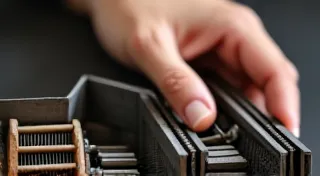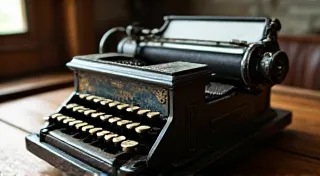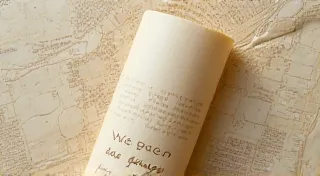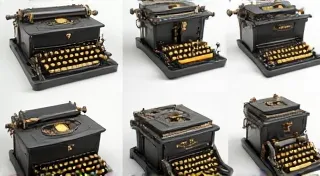Chromatic Decay: The Palimpsest of Ink and Rust on Royal Standard Machines
There's a certain melancholy beauty in observing a vintage typewriter succumb to the inevitable passage of time. It's more than just deterioration; it’s a palimpsest – a manuscript where the original writing has been effaced and overwritten, but traces of it remain. With Royal Standard typewriters, this palimpsest takes on a particularly poignant character, a vibrant interplay of faded ink, creeping rust, and the enduring testament to meticulous craftsmanship. These machines weren't just tools; they were vessels of stories, confidantes of authors, and silent witnesses to decades of human endeavor.
My own journey with Royal Standards began unexpectedly. I inherited a 1948 Royal Standard, a gift from my grandfather, a prolific letter writer and amateur poet. He’s long gone, but the typewriter remains, a tangible link to his quiet, contemplative world. Initially, I was horrified by its condition – a mottled patina of brown ink stains, orange rust blooming on the margins of the keys, and a general air of neglect. My instinct was to restore it to its original glory, to erase the signs of time. But as I began to carefully disassemble and examine it, I started to see something more.
The Chemistry of Aging: Ink, Rust, and Royal Standard Construction
The discoloration we observe on vintage typewriters isn't random. It’s a complex chemical reaction driven by the inherent properties of the materials involved. Royal Standard machines, particularly those from the mid-century, were constructed primarily of die-cast aluminum and steel. The aluminum, while resistant to corrosion, can still react with atmospheric pollutants and, crucially, with the ink it so diligently imprinted. Many vintage inks were oil-based, often containing dyes that are prone to fading and, over time, can stain the aluminum surfaces. The ink's acidity, even slightly acidic, contributes to the degradation process. Understanding the basics of typewriter restoration, much like understanding the intricacies of other vintage machines like a Smith Corona Galaxie, reveals the challenges and rewards of preserving history.
Rust, of course, is the bane of any metal object’s existence. Iron and steel components within the Royal Standard – often found in the escapement mechanism, carriage rails, and various internal levers – are susceptible to oxidation. The presence of moisture, humidity, and salts (from fingerprints, environmental exposure, or even cleaning attempts) accelerates this process. Different Royal Standard models, with subtle variations in their construction and plating, will show rust differently. For example, earlier models with thinner plating are generally more prone to surface rust than later, more robust versions. The color of the rust itself – ranging from a pale orange to a deep reddish-brown – can provide clues about the age and environmental conditions the machine has endured.
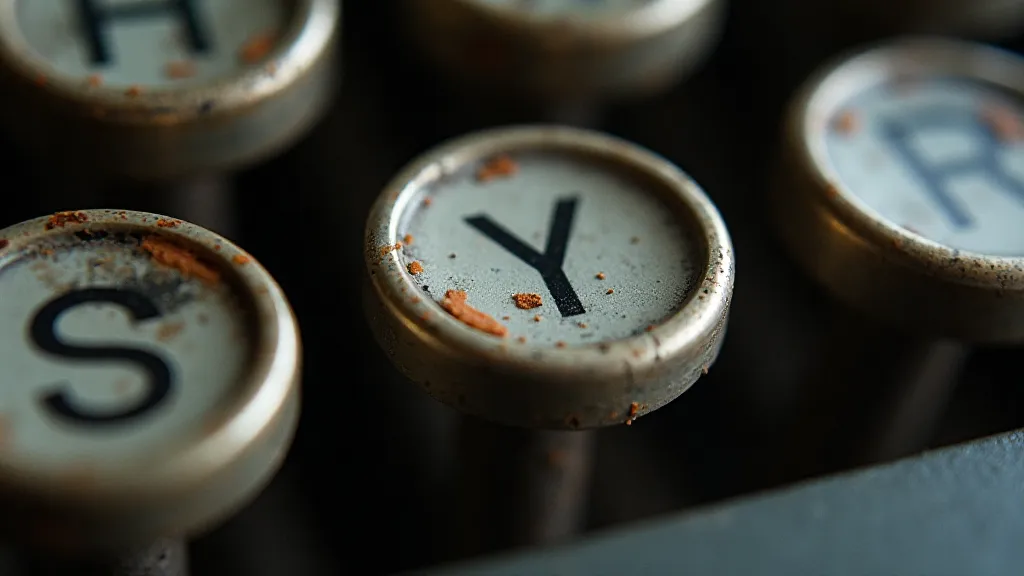
The Palimpsest Revealed: A Chronicle of Use
Each mark, each stain, isn't a blemish to be eradicated, but a layer in the machine’s history. A dense cluster of ink smudges might indicate a frantic writer struggling to capture a fleeting thought. A streak of rust might reveal a period of storage in a damp basement. The subtle variations in ink color – perhaps a shift from deep black to a more faded grey – could reflect a change in the type of ink used by the original owner. These are tiny narratives etched into the metal, a silent testament to the human touch. The quiet hum of a vintage machine, like a Smith Corona Silent, holds a certain nostalgia, but also presents unique challenges for those seeking to revive them.
Consider the impact of different writing practices. A meticulous typist who cleaned their machine regularly will have a cleaner surface, even if the machine is old. A writer who relied heavily on correction tape will leave traces of adhesive residue. A machine used primarily for creative writing, with a greater propensity for errors and revisions, will likely bear more evidence of frantic use. The evidence is everywhere if you look for it, a story waiting to be deciphered. It’s a journey into the past, not unlike the historical significance preserved within an IBM Selectric.
Documenting and Preserving the Patina: A Cautious Approach
When restoring a vintage typewriter, the ethical dilemma often arises: how much to intervene? While a full, bare-metal restoration might return the machine to a pristine appearance, it also obliterates its history. My approach is to document meticulously before any work is undertaken. High-resolution photographs, close-up macro shots, and detailed notes about the existing patina are essential. This serves as a record of the machine’s past and provides a benchmark against which to assess the impact of any restoration efforts. It's a painstaking process, much like the detailed restoration guide for an Underwood 5.
The preservation of the patina isn’t about preventing further degradation; it’s about slowing it down and minimizing further damage. Gentle cleaning with specialized solvents designed for vintage inks can remove surface grime without stripping the underlying discoloration. Rust inhibitors can be applied to stabilize existing rust and prevent it from spreading. Waxing can protect the metal surfaces from moisture and pollutants. The key is to use minimal intervention and to avoid harsh chemicals that could alter the machine’s character. The fragility of these machines demands a nuanced approach, respecting the history embedded within them.
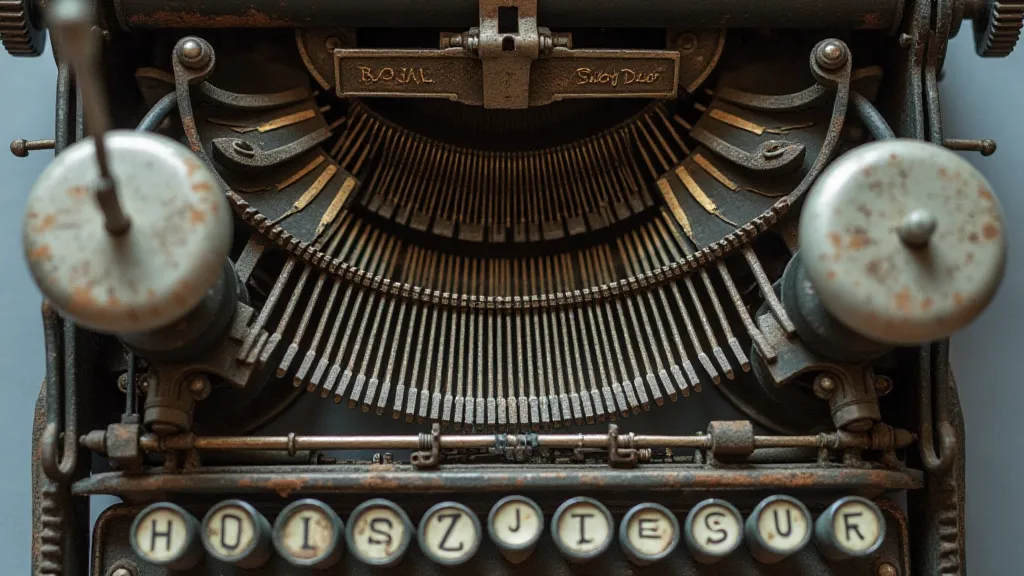
Beyond Restoration: Appreciating the "Accidental" Beauty
There’s a growing appreciation for the aesthetic qualities of aged typewriters. Collectors are increasingly valuing machines that retain their original patina, recognizing that these markings are an integral part of their character. These "accidental" markings – the ink stains, the rust blooms, the faint scratches – are what distinguish a vintage typewriter from a factory-fresh reproduction. They tell a story, evoke a sense of history, and connect us to the past. It’s a testament to the collaborative nature of time, where the machine and its user become intertwined.
The beauty lies not just in the craftsmanship of the machine itself, but in the interplay between the machine and its user. It's a collaboration across time, a palimpsest etched by countless keystrokes and environmental exposure. The tactile experience of typing on a vintage machine, the satisfying clack of the keys, is a connection to a different era. The mechanical complexity and ingenuity of these early machines continues to inspire awe and appreciation.
My grandfather’s Royal Standard remains a constant reminder of this perspective. I no longer see the ink stains and rust as blemishes to be erased. I see them as echoes of his voice, as tangible links to his world. They are a testament to the enduring power of words and the enduring beauty of a machine that has borne witness to a life lived. Each imperfection tells a story, a chapter in the machine’s own biography, revealing patterns of use and the passage of time.
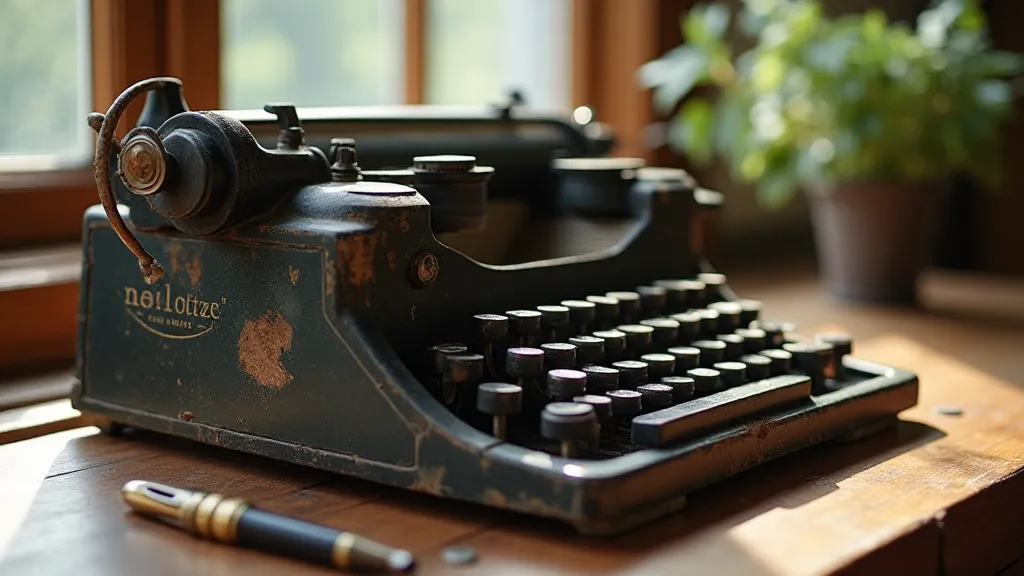
Understanding the nuances of preserving these machines is a dedication to not just mechanics, but to the stories they hold. The legacy of these machines goes beyond their functionality – they are cultural artifacts, tangible links to a past era. Their continued existence provides a glimpse into a time when communication was a more deliberate and thoughtful process, and each typed letter carried a weight of purpose.
Furthermore, the care required to preserve these machines offers a valuable lesson in appreciating the beauty of imperfection. It’s a reminder that the marks of time are not signs of decay, but rather, testaments to a life well-lived. They speak of resilience, of endurance, and of the profound connection between humanity and the objects we create.
The preservation of vintage typewriters is more than a hobby; it’s a commitment to preserving a piece of history. It's a way of connecting with the past, and of ensuring that the stories contained within these machines continue to resonate for generations to come. It’s a legacy of craftsmanship, ingenuity, and the enduring power of the written word.
